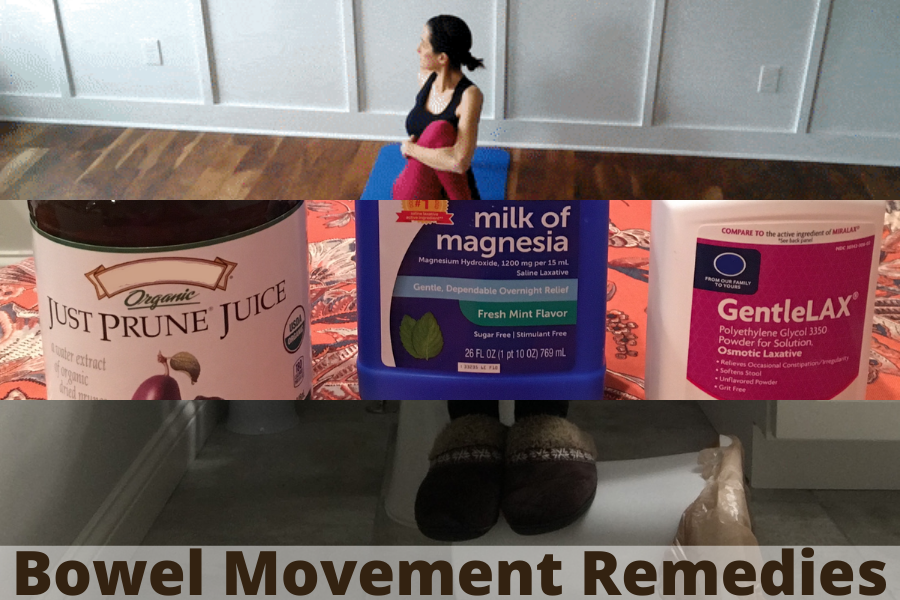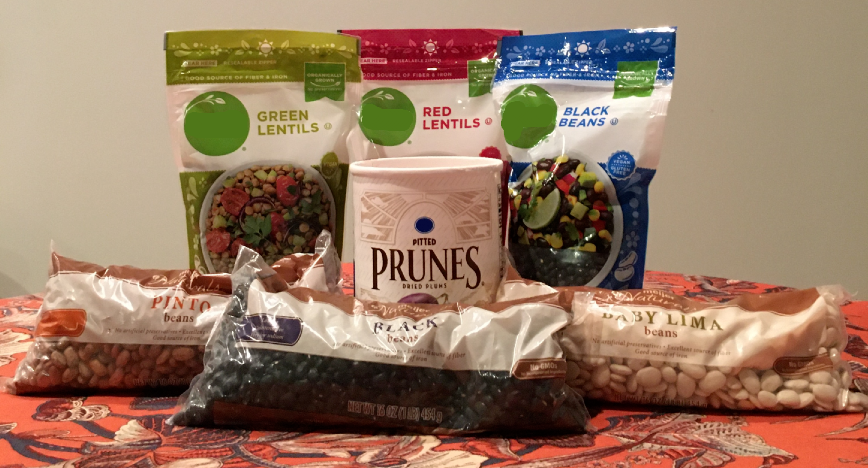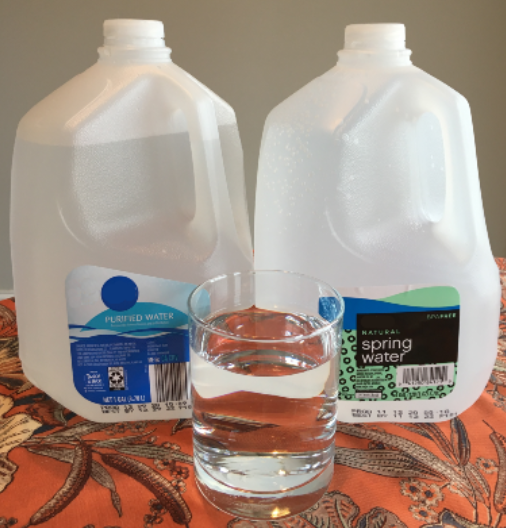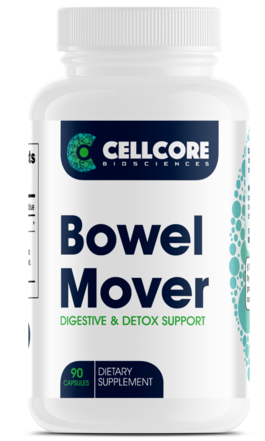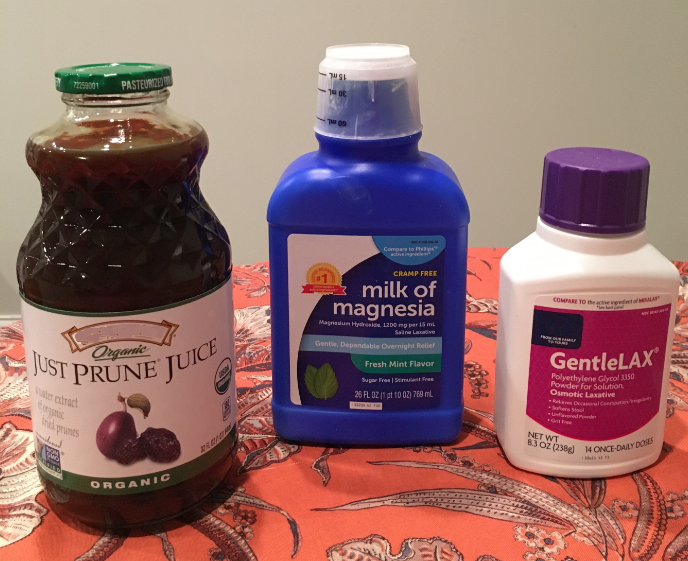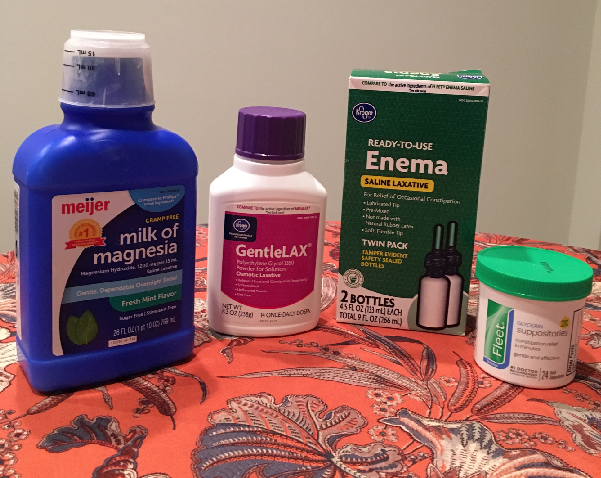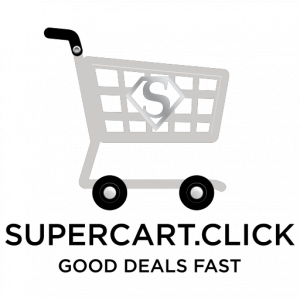Want to know bowel movement remedies that will help you poop immediately? These are the 15 most effective bowel movement remedies to help you have a bowel movement as soon as possible.
Many people are more constipated than they may realize. Having only one bowel movement a day or less means you’re constipated. Knowing these top 15 bowel movement remedies will help you prevent constipation and relieve you of any current constipation you may have.
Functional medicine doctors say that in order to have a healthy, regular bowel movement cycle, you should be having a bowel movement about 2 to 3 times a day or more (but not diarrhea). This is because you should have as many bowel movements in a day as you have large meals in a day, which tends to be about 2 to 3 times a day for most people.
In this post, you are going to learn about all the most effective bowel movement remedies to encourage natural bowel movements. These treatments and techniques will help you have a bowel movement as soon as possible. Some bowel movement remedies work faster than others, as is noted in the post below.
After learning about these bowel movement remedies, you are going to find it much easier to have a bowel movement immediately and will be extra prepared to not be constipated as much in the future.
This post is all about the most healthy and effective bowel movement remedies to help you poop immediately.
The Best Bowel Movement Remedies
1. Exercises for Bowel Movement
Having a sedentary lifestyle, such as spending most of the day sitting or lying down, can make you more prone to constipation. By moving your body more, your bowels will be moving more too. Daily physical activity can help you have daily bowel movements (or several daily bowel movements).
Examples of daily light exercises that can help you have a bowel movement include participating in sports, walking, jogging, stretching, and dancing. These exercises increase blood flow to your abdomen and stimulate muscles in your digestive system.
Another great way to have a bowel movement is by trying certain yoga poses that involve twists. These twist poses can squeeze the intestines to help loosen stool. Two great examples of yoga poses that involve a twist are the seated spinal twist and the supine twist. Other great yoga poses that encourage bowel movements are the standing forward bend or forward fold pose, the cat cow pose, and the downward dog pose.
Seated Spinal Twist
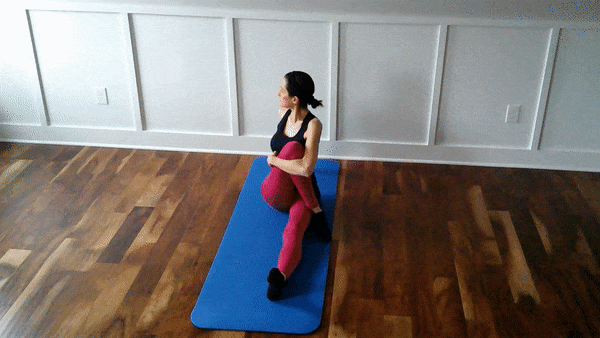 Click to watch the full Seated Spinal Twist video on YouTube.com.
Click to watch the full Seated Spinal Twist video on YouTube.com.
Click this link for further video instruction on how to do the Seated Spinal Twist pose.
Supine Twist
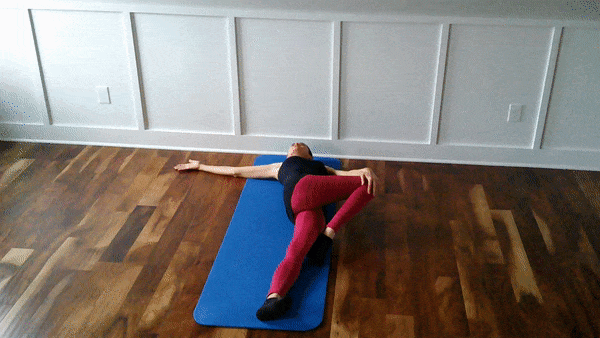 Click this link to watch the Supine Twist video on YouTube.com.
Click this link to watch the Supine Twist video on YouTube.com.
Click this link for further video instruction on how to do a Supine Twist.
Forward Fold
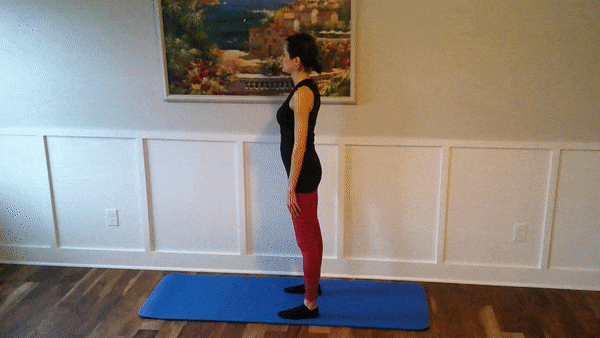 Click this link to view the Forward Fold video on YouTube.
Click this link to view the Forward Fold video on YouTube.
Click this link for further video instruction on how to do a Forward Fold or Standing Forward Bend.
Downward Dog
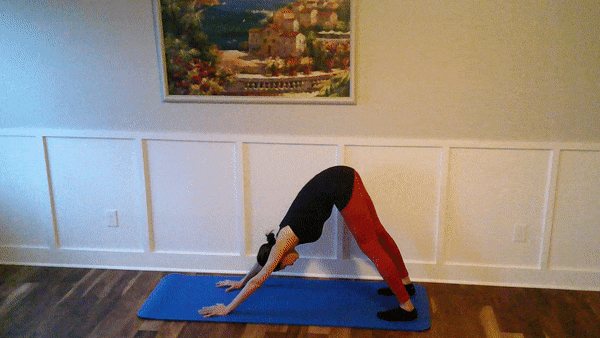 Click to watch the full Downward Dog video on YouTube.
Click to watch the full Downward Dog video on YouTube.
Click this link for further video instruction on how to do a Downward Dog pose.
Cat Cow Pose
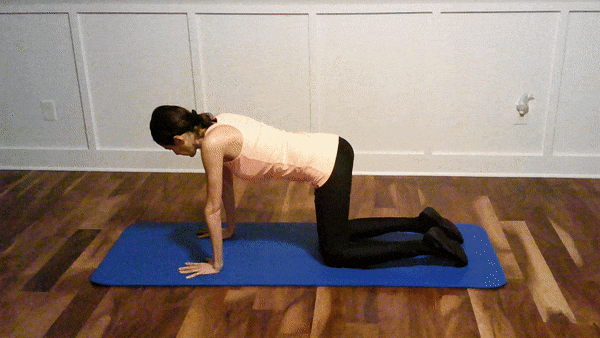 Click this link to watch the full Cat Cow video on YouTube.
Click this link to watch the full Cat Cow video on YouTube.
Click this link for further video instruction on how to do the Cat Cow stretch.
2. Colonic Massage for Constipation
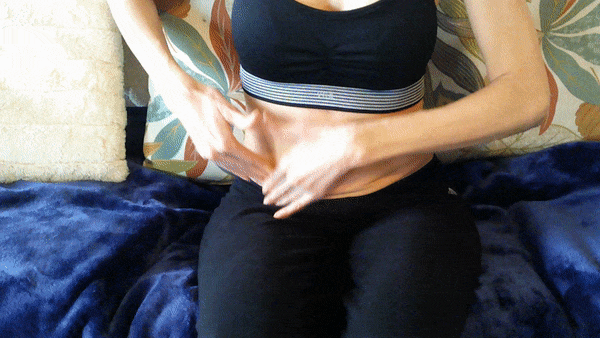 Click this link to watch the full colonic massage video on YouTube.
Click this link to watch the full colonic massage video on YouTube.
For an alternative viewpoint and detailed explanation, watch this YouTube video on colonic massage.
Massaging your own abdomen from the beginning to the end of the colon pathway can help you have a bowel movement. Colonic massage can assist your colon’s natural peristalsis movement. The physical stimulation on your colon can help you move your stool through your colon, it can help you group your stool together so you don’t have too many areas in your colon of separated bits of stool. It also can help relieve gas.
A suggested amount of colonic massage is to massage your abdomen for about 10 minutes twice a day. Massaging in a clockwise motion, from your right lower abdomen in a horseshoe shape over to your left lower quadrant, helps move the stool in the colon toward the rectum. Drinking hot water or tea before this massage can also help with moving the stool through your colon.
Tips:
- You can start the colonic massage in a sitting position or lying back down on your bed or sofa.
- Keep your knees bent to keep your belly soft and loose.
- Your colon has a horseshoe shape and starts in the lower right quadrant of your abdomen, goes up to your rib cage or just below your rib cage, goes down the left side and then moves in towards the bottom center of your abdomen near where your rectum is.
- You can massage with your fingertips, knuckles, or the heel of your hand.
- You can just stroke the colon area from its start in your lower right abdomen to its end in the lower left quadrant and to the bottom center abdominal area. You can use a gentle pressure or a little more pressure as long as it feels good to you.
- Take deep belly breaths as you do this massage. Belly breaths don’t start from your chest, but from your lower abdominal area. Fill your belly with a deep breath of air, move that inhale up to your chest, then exhale it slowly from your chest and then exhale it down to your abdomen and then start that deep breath again from your abdomen.
3. Best Bowel Movement Foods
Eat more high fiber foods to encourage bowel movements.
Fiber is the undigested part of food. It has been found to help soften stools because it helps draw water into the intestines. Fiber also increases the bulk and consistency of stools. Eating a good amount of fiber daily helps to keep your bowel movements regular.
A tip to remember is that when you increase fiber in your diet, it is also a good idea to increase your fluid intake, preferably with purified water. Water is the best cleansing drink for your body. If you increase your fiber intake but do not increase your fluid intake, too much fiber can constipate you. All that extra fiber bulk will need extra support from the water you drink to comfortably move the stool through your system.
There are two types of fiber, insoluble fiber and soluble fiber. Insoluble fiber adds bulk to stools and may help them pass more quickly through your digestive tract. Examples of insoluble fiber include wheat bran, wholegrain pasta, bread, cereal, skin of fruits and vegetables, brown rice, and whole grains.
Soluble fiber dissolves in water and helps absorb water into your intestines and form a gel-like paste which helps soften stools, set the pace for how often you have a bowel movement, and make you regular. Examples of soluble fiber include beans, lentils, peas, barley, oats, nuts, seeds, bran, and some fruits and vegetables.
To prevent constipation, work on getting a daily mix of soluble and insoluble fiber in your diet. The recommended daily intake of fiber for women is 25 grams and for men is 38 grams.
Prunes are also a great source of fiber and a natural laxative. Seven medium prunes twice daily is an effective dose for most people. However, if someone has IBS, they will need to avoid prunes because prunes can irritate their condition.
According to whfoods.com the food groups that are the richest in fiber include the following: beans and legumes, vegetables, fruits, grains, nuts and seeds. The following specific foods are the richest in fiber:
Navy Beans 1 Cup 68% DV
Dried Peas 1 Cup 58% DV
Lentils 1 Cup 56% DV
Pinto Beans 1 Cup 55% DV
Black Beans 1 Cup 53% DV
Lima Beans 1 Cup 47% DV
Garbanzo Beans (Chickpeas) 1 Cup 45% DV
Kidney Beans 1 Cup 40% DV
Prunes: 7 prunes 21% DV
Barley 1 Cup 38% DV
Raspberries 1 Cup 29% DV
Collard Greens 1 Cup 27% DV
Turnip Greens 1 Cup 18% DV
Since the foods that are the absolute richest in fiber tend to be the beans and legumes, make sure that the beans and legumes you eat are fully cooked. It is best to sort, rinse, soak and boil your own beans, so you can eat more clean and less processed foods that may have added chemicals. Here is a link on how to prepare your beans and lentils the old fashioned way.
4. Drink Water for Constipation
Dehydration can cause constipation. Drinking more water may be the best first step to constipation relief. A cup or two of water may be enough to trigger a bowel movement.
Drinking more water helps soften stool and makes it easier for stool to pass. It’s commonly recommended to drink 6 to 8 glasses of water daily in order to have regular bowel movements. Some functional medicine doctors recommend drinking 12 glasses or about a gallon of water a day to truly cleanse your system and break down any food in your gut. “Dilution is the solution to pollution,” some functional medicine doctors say.
For additional detox support and softening of your stool, consider drinking a cup or more of hot water daily. Hot water can help break down solids in your intestines. Hot water can also encourage the peristaltic process. Peristalsis is the wave-like movements of your intestines that move the stool along the canal forward.
In addition to helping relieve constipation, hot water may help with the detoxification process as hot water has more negative ions in it that can draw out positive ions in your body. Positive ions are associated with waste materials, harmful acids, and toxins. The hot ionized water helps calm and cleanse the tissues of your body.
The quality of your water is also important. Make sure your water is at least filtered or drink reverse osmosis water or distilled water. This helps reduce unwanted chemicals in your water. Adding a drop of Mito ATP and a drop of CT-Minerals to every cup of water you drink can give it beneficial nutrients, energize it, and structure it.
5. Best Bowel Movement Supplements
Click here to check out the Bowel Mover supplement at ImmuneBoostNaturals.com
Bowel Mover by CellCore Biosciences™ is a non habit forming bowel movement supplement. Additionally, this supplement helps with digestive and detox support. This supplement provides natural, gentle bowel relief. It is a vegan blend of a dozen herbs.
What is unique about this supplement is that it also includes fulvic acid extracts. Fulvic acid extracts help protect the herbs from damage as they travel through the intestinal tract. The fulvic acid also helps drive the herbs to where they are needed.
The Bowel Mover supplement promotes natural intestinal peristalsis to keep your bowels moving. It encourages soft stools that are easy and comfortable to eliminate. This supplement also supports a normal gut microbiome to promote immune and digestive health. This is the best, natural, and science based bowel movement supplement you can buy today. Click here to check it out.
6. Best Bowel Movement Position
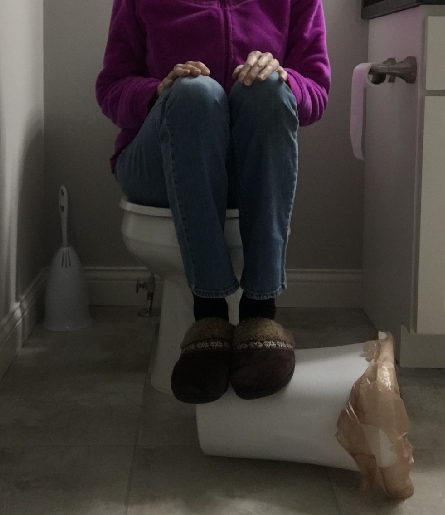 The best bowel movement position is to get in a squat position to poop.
The best bowel movement position is to get in a squat position to poop.
What exactly is a squat position? This means making sure your knees are above your hips when you sit down to have a bowel movement. Using some kind of a foot stool makes this easily possible. This squat position relaxes your puborectalis muscle, which makes it a lot easier for stool to pass. This will help you have a bowel movement without straining. Straining to poop is not good for your health. Straining increases your intra-abdominal pressure and congests soft tissues. So, you are more likely to develop hemorrhoids, prolapse, or vaginal varicose veins if you strain to poop.
If you place your feet on a foot stool of some kind while you sit on the toilet, you will be in a squat position. A foot stool can be something you repurpose, such as a solid bath garbage can turned on its side or a solid plastic storage box. You can also use a Squatty Potty which is only made for this purpose. Click here to view the original and various knock offs of the Squatty Potty at Amazon.com.
Place your feet on your foot stool of choice the next time you go to the toilet for a bowel movement. You will notice a big difference in the ease you experience with having a bowel movement in this squat position compared to a position where your feet are flat on the floor.
I personally flip my strong Rubbermaid bathroom garbage can on its side to prop my feet up when going #2. I try to keep my feet closer to the bottom of the can, which can hold the weight of my legs better. The garbage can on its side is an inconspicuous tool that is always in my bathroom.
7. Best Bowel Movement Drinks
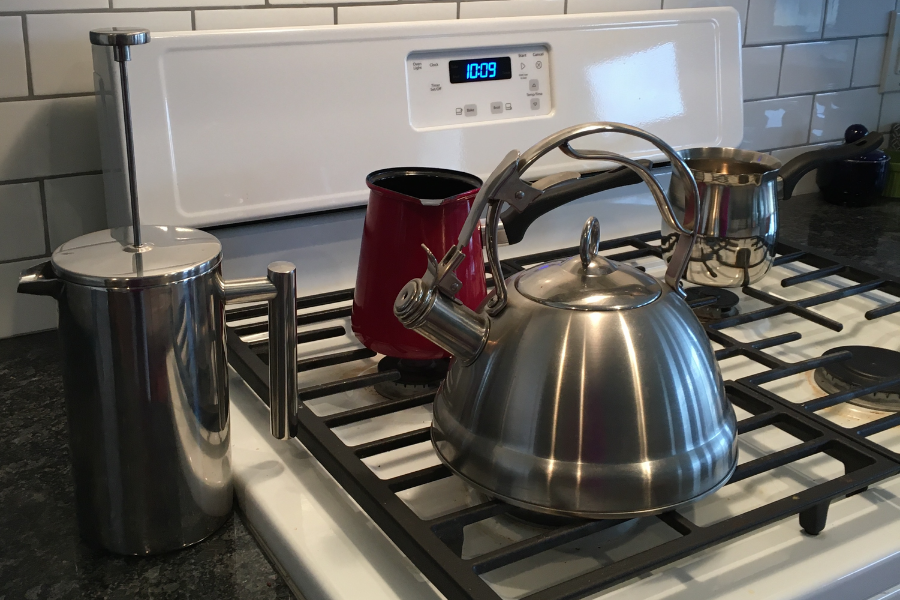 Drink fluids that may encourage a bowel movement such as caffeinated coffee and prune juice.
Drink fluids that may encourage a bowel movement such as caffeinated coffee and prune juice.
While caffeinated beverages may dehydrate you, there is also evidence that a cup of coffee can help you poop. The reason for this is that caffeine can stimulate the muscles in your digestive system to contract. For this reason, a cup of coffee or tea a day may help you poop. To help prevent the dehydration that caffeine can cause, drink extra water if you are drinking caffeinated beverages to help you poop.
Prune juice can also help you have a bowel movement. Prunes are a great natural first line of defense against constipation. In addition to being a good source of fiber, prunes have a high sorbitol content that can stimulate a bowel movement. People with IBS may not benefit from prunes because sorbitol is a sugar alcohol that can aggravate IBS symptoms.
The CellCore Biosciences™ Comprehensive Protocol can help resolve the root cause of IBS and other conditions. Specifically, taking Para 1, which is made of Mimosa Pudica seeds, may help relieve IBS symptoms. Working up to 5 caps of Para 1 5 times a day for 3 weeks helped to relieve IBS symptoms for one of the CellCore Biosciences clients. A standard initial dose of Para 1 is 2 caps first thing in the morning and 2 caps before bedtime with a large glass of water and preferably on an empty stomach.
Additionally, certain teas may help treat constipation. These constipation-relieving teas include the following:
Ginger: this spice can warm you up and speed up your digestion.
Peppermint: This herb can soothe an upset stomach and help stool move through your intestines.
Chamomile: This herb relaxes the digestive muscles, so they do not tense up and not function properly.
Licorice root: This herb has anti-inflammatory properties. Licorice root can ease the digestive system.
Dandelion root: This herb stimulates the liver.
Black or green tea: These teas are high in caffeine which can stimulate the bowel muscles to have a bowel movement.
8. Probiotics and Prebiotics for Constipation
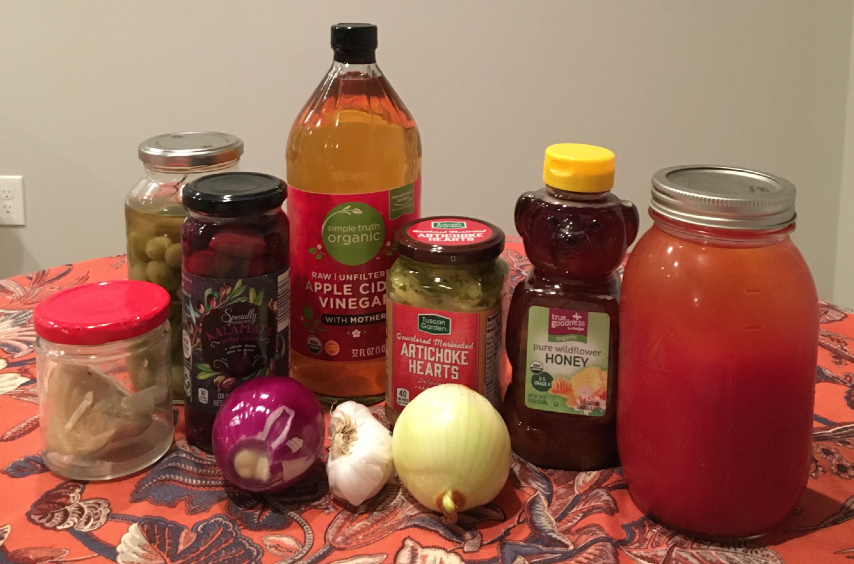 Probiotics can help prevent or relieve chronic constipation. If constipation is caused by an unhealthy balance of the bacteria in your intestines, eating more probiotic rich foods may help.
Probiotics can help prevent or relieve chronic constipation. If constipation is caused by an unhealthy balance of the bacteria in your intestines, eating more probiotic rich foods may help.
Probiotics are good bacteria that naturally live in the gut. People can increase their probiotic levels by eating probiotic rich foods such as fermented foods. Fermented foods include sauerkraut, pickles, kimchi, cider, miso, olives, marinated artichoke hearts, and yogurt.
Prebiotic foods provide food to the probiotics in your digestive system. Eating more prebiotic foods can increase the number of probiotics in your system. Eating more prebiotic foods can also increase the frequency of your bowel movements and make your stools softer.
Examples of prebiotic foods include:
Chicory
Artichokes
Honey
Garlic
Onions
Bananas
Leeks
Chickpeas
Oatmeal
CellCore Biosciences™ has recently released it’s own probiotic supplement called CT-Spore that is worth checking out for an efficient and pure way to get your probiotics everyday.
9. Constipating Foods to Avoid
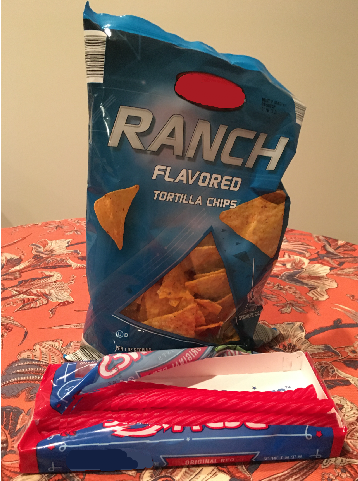 To help maintain regular bowel movements, avoid constipating foods such as dairy and high fat, low fiber foods.
To help maintain regular bowel movements, avoid constipating foods such as dairy and high fat, low fiber foods.
People who are lactose intolerant may become constipated when they eat dairy products. Meat and processed foods can also make constipation worse. Examples of processed foods that have a low fiber content include chips, breakfast cereals, desserts, and frozen ready meals.
10. Bowel Training Techniques
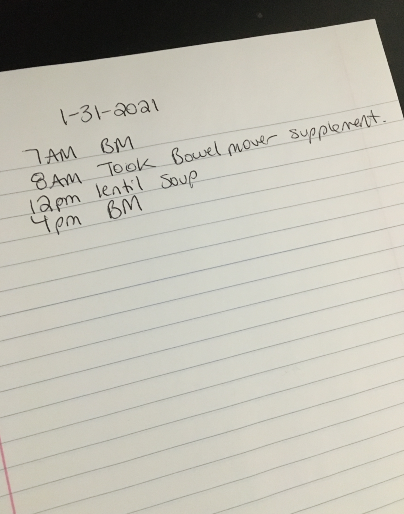 Working on having a schedule for having a bowel movement may help. Many people have a bowel movement every morning.You can help train your body to do this by sitting in a squat position on the toilet using a foot stool and patiently waiting a few extra minutes in the morning to see if this position may stimulate a bowel movement.
Working on having a schedule for having a bowel movement may help. Many people have a bowel movement every morning.You can help train your body to do this by sitting in a squat position on the toilet using a foot stool and patiently waiting a few extra minutes in the morning to see if this position may stimulate a bowel movement.
You can also track your BMs to see when your bowel movements may be slowing down and at what times, or after which events (such as certain exercises, supplements, foods, and drinks) you are most likely to have a bowel movement.
11. The Brown Bomb for Constipation | Medical Professionals’ Secret Weapon
When I worked as a registered nurse, I learned about the brown bomb. The recipe is a cup of prune juice, the recommended dose of milk of magnesia for your age and weight, and the recommended dose of MiraLAX for your age and weight. The recommended dose is written on the back of each bottle of these medicines.
Mix the ingredients well with a spoon until all the MiraLAX is dissolved.
This drink is almost guaranteed to cause someone to have a bowel movement within two hours.
After waiting the prescribed amount of time between doses, a second dose of this brown bomb would be given if it didn’t work the first time, but it usually works the first time. If after two doses of this method there is no bowel movement, then an enema can be given.
12. OTC Meds for Constipation
There are numerous types of over the counter medications that can help you have a bowel movement. Here is a run down of your options.
A. Suppositories
A suppository is inserted in your rectum to help you have a bowel movement. Suppositories often work by causing your intestines to squeeze so you have a bowel movement (Dulcolax) or they soften your stool (glycerin suppositories) by drawing water into your intestines. Using suppositories too often is risky because it can cause dependence on the product in order to have a bowel movement. Suppositories typically work faster than laxatives you take by mouth.
Examples of suppositories include the following:
Bisacodyl (Dulcolax)
Glycerin
B. Osmotics
Osmotic laxatives help draw fluids from the surrounding tissues into your intestines so your stool is softer. If you’re an older adult or have a heart or kidney condition, check with your doctor before using this medicine.
There is such a thing as food grade Epsom salt that is taken orally dissolved in water to help relieve constipation. However, most often Epsom salt is used in a hot bath. The magnesium content of Epsom salt helps to relax your muscles and relieve constipation. In a bath, the magnesium is absorbed through your skin.
Examples of osmotics include the following:
Magnesium hydroxide (Milk of Magnesia)
Polyethylyene glycol (MiraLAX)
Magnesium Citrate
Lactulose (Kirstalose)
Magnesium sulfate (epsom salt)
C. Fiber Supplements
Fiber supplements can help if your constipation may be due to a lack of sufficient fiber in your diet. Fiber supplements absorb water and add bulk to your stool. Fiber supplements increase the water content of your stool. They make it easier for your intestines to move the stool along the pathway because they give the intestines more to grab onto (from the bulking) and they make it easier for the intestines to push the stool along the pathway because the stool is softened.
Drink plenty of extra water when taking a fiber supplement so that it doesn’t end up blocking you up. Fiber supplements absorb water, so they may dehydrate you and constipate you even more if you are not drinking extra water while taking them.
Examples of fiber supplements include the following:
Calcium polycarbophil (FiberCon)
Psyllium (Metamucil, Konsyl)
Methylcellulose fiber (Citrucel)
Wheat dextrin (Benefiber)
D. Saline Laxatives
Saline laxatives cause water to be drawn into the colon. This softens stool. Saline laxatives that contain magnesium may also have a mild stimulant effect on the colon muscles, helping to push the stool along.
People with a kidney condition must consult with their doctor before using saline laxatives because they may cause them to have toxic levels of magnesium in their system.
Examples of saline laxatives include the following:
Magnesium citrate (Citroma)
Magnesium hydroxide
Sodium phosphate (found in Fleet Enema)
E. Stimulant Laxatives
Stimulant laxatives work by causing the intestines to squeeze to help stool move through the intestines. It’s best to try stimulants as a last resort if nothing else has worked. This is because they may cause a dependency because you are not allowing the intestines to do their own work with natural peristalsis.
An herbal laxative that is also a stimulant laxative is Senna. It contains plant compounds that stimulate the nerves in the gut to help you pass stool faster.
A dose of Senna often takes about 8 hours to work. It is often recommended to take it in the evening so that it works overnight and you can have a bowel movement in the morning. It is often taken as a tea.
Senna is often not recommended for pregnant or breastfeeding women or people with certain health conditions such as inflammatory bowel disease.
Examples of laxative stimulants include the following:
bisacodyl (Dulcolax, Ducodyl, Correctol)
senna-sennosides (Senokot)
Senna (herbal laxative)
G. Lubricant Laxatives
Lubricant laxatives are taken orally based on the directions on the bottle. One of the most common lubricant laxatives is mineral oil. It works by adding a slick coat to your intestine’s walls. This makes it easier for stool to move through your colon and out of your body. It’s recommended to take the dose of mineral oil no more than 2 hours after your evening meal. Results can be expected within six to eight hours.
Examples of a lubricant laxative:
Mineral oil
H. Stool Softeners
Dehydration can cause constipation and hard stool. A stool softener can moisten stool by pulling in water from your intestines into your stool. Stool softeners soften your stool and make it easier for stool to leave your body.
Stool softeners are for short term use and recommended for people who need to avoid straining while having a bowel movement.
Examples of stool softeners:
Docusate sodium (Colace)
Docusate calcium (Surfak)
13. Castor Oil Pack for Constipation
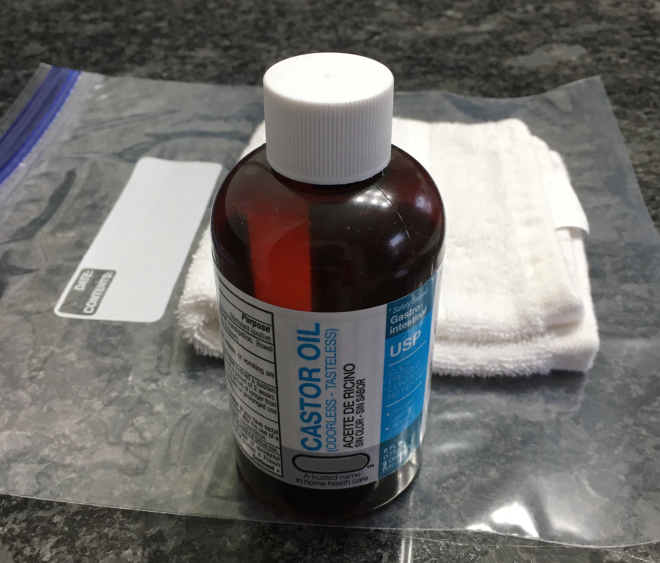 A castor oil pack may reduce constipation symptoms. Castor oil should only be used externally over unbroken skin because ingesting it is toxic.
A castor oil pack may reduce constipation symptoms. Castor oil should only be used externally over unbroken skin because ingesting it is toxic.
To create a castor oil pack, place a tablespoon or two of castor oil in a soft cotton washcloth. Get the oil spread around the washcloth. Then place the washcloth on your abdomen covered by a sheet of plastic, such as saran wrap or a large gallon plastic bag. The plastic cover helps prevent the castor oil from staining your shirt.
If you decide to try a castor oil pack, it’s a good idea to wear a shirt you don’t mind staining with castor oil. If you do get castor oil on your shirt, it can take several rounds of washing it in the washing machine before all the castor oil comes out.
14. Parasite Cleanse to Relieve Constipation
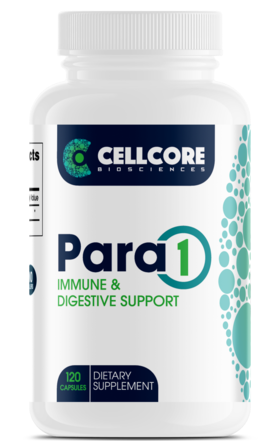 Parasites are very common, more than most people realize, and they can definitely cause constipation. It’s a myth that parasites do not exist in America. Many doctors still tell their patients that parasites only exist in third world countries. That is ridiculous. Most people are commonly advised to treat their cats and dogs for worms, but the medical community does not often support people treating themselves for worms. In fact, many medical professionals discourage people from even considering parasites may be a problem by saying they don’t exist in America! Well, they do exist in America. And anyone with a pulse most likely has a parasite infection that needs to be taken care of.
Parasites are very common, more than most people realize, and they can definitely cause constipation. It’s a myth that parasites do not exist in America. Many doctors still tell their patients that parasites only exist in third world countries. That is ridiculous. Most people are commonly advised to treat their cats and dogs for worms, but the medical community does not often support people treating themselves for worms. In fact, many medical professionals discourage people from even considering parasites may be a problem by saying they don’t exist in America! Well, they do exist in America. And anyone with a pulse most likely has a parasite infection that needs to be taken care of.
Parasites can be accidentally ingested in numerous ways: from pets, the air (someone can sneeze pin worms at you, some functional medical doctors admit), dirt, walking barefoot on the ground (a common pathway for getting hookworms), contaminated food, and contaminated water. Think of how many fruits, vegetables, meats, and seafood now arrive from global markets. Most parasite eggs are microscopic and not visible to the human eye. Think of all those salads you ate at restaurants. Who knows who handled or coughed or sneezed around your food at restaurants, buffets? Maybe you had slightly undercooked meat or seafood? City water does not filter everything out. Think about when you played in the dirt as a kid. The dogs and cats you pet and maybe absentmindedly touched your face later or ate something? Shopping carts, public handlebars, doors you touched, public electronic pens to sign for your credit card, etc. It only takes one slip up to pollute your system with parasite eggs and it happens very easily in life.
Doctors at CellCore joke that the test for parasites is equal to the test for whether or not you have a pulse on your neck or at your wrist. Anyone with a pulse, most likely is unknowingly carrying around parasites and the parasites don’t like to be seen or come out easily. They are extremely cunning. Parasites keep living inside people unnoticed except for people’s gently or larger protruding bellies. No, that’s not all fat. Most people have parasites. Some other symptoms of having a parasite include dark circles around your eyes, anxiety, depression, aggression, cysts, bad breath, difficulty sleeping, sugar cravings, grinding your teeth at night, fatigue, and anemia, as functional medicine doctors advise.
Parasites often go unnoticed because they live mostly in people’s small intestines, which can be over 20 feet long. Stool samples often result in false negatives for this reason as the eggs often do not make it to the colon. Parasites often do not appear in people’s stool because they hook onto the inner wall of the small intestines to avoid being pushed out as stool moves by.
It can take a long time of parasite cleansing before they finally show up in your stool, too. They also go unnoticed because they often sink to the bottom of the toilet or are buried inside the stool. You actually need to dig through your stool with a stick to identify them, which hardly anyone has the or nerve or strength to do. You may take a parasite cleanse for a day or two and see nothing superficially in your stool and falsely delude yourself that you don’t have parasites. It can take 4 to 5 months of herbal cleansing and coffee enemas for the really big parasites to be released. To speed up their expulsion, you can take certain top of the line herbal remedies. Para 1 by CellCore Biosciences™ is a great supplement to start with. This supplement is made of only mimosa pudica seeds, not the plant, so it has more potential energy. It also has no added fillers.
CellCore additionally offers a parasite cleansing kit called the Full Moon Kit. They do recommend you start to open up your body’s drainage pathways before aggressively parasite cleansing. Opening up your body’s drainage pathways first helps reduce side effects from parasite cleansing and helps reduce constipation that may result as your body works on releasing parasites.The parasites themselves may constipate you further as they can create a road block for stool to pass through your intestines. This is why it’s important to open up your body’s drainage pathways using phase 1 of the foundational protocol or phase 1 of the comprehensive protocol before you begin parasite cleansing in earnest.
The best way to start cleaning parasites is to at least start with the Foundational Protocol to open up your body’s drainage pathways before you start more aggressively parasite cleansing. Para 1 is a safe supplement to start with though as a cost-saving measure and for more immediate parasite cleansing if you are not yet constipated
15. Enema for Constipation
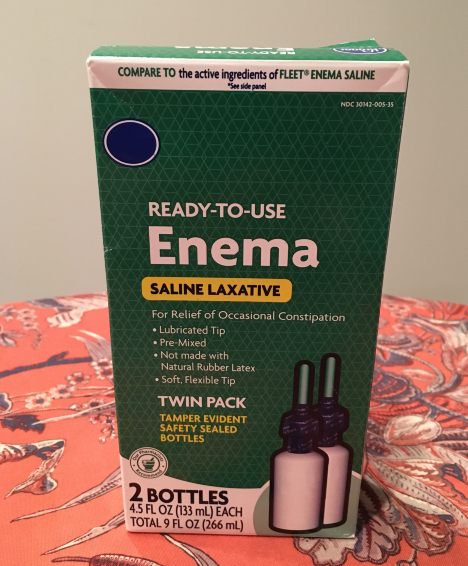 If all the other above methods to have a bowel movement fail, an enema is usually the next tool to really make sure you go. An enema pushes fluid directly into your rectum.
If all the other above methods to have a bowel movement fail, an enema is usually the next tool to really make sure you go. An enema pushes fluid directly into your rectum.
A Fleet enema, or a generic brand of a Fleet enema, is commonly used for enemas. You can also create your own enema using distilled water in an enema bag kit. Instructions on how to set up your own enema bag kit can found with this enema kit sold at amazon.com.
Irrigating your rectum with an enema solution or distilled water is almost guaranteed to immediately trigger a bowel movement. The enema solution helps soften the stool in your rectum so that it can easily pass out of your system. The substance that the enema solution is made of can also help stimulate a bowel movement. Sodium phosphate is found in the Fleet enema. Sodium phosphate is a saline laxative that draws water into your intestines to help stool move along the intestines.
The Fleet enema or a generic brand of it may be the simplest path to getting an enema to treat constipation. There are no separate pieces you need to attach together like you will have to with a do it yourself enema kit. However, getting a do it yourself enema kit will save you money in the long run.
This post was all about the 15 most effective bowel movement remedies so you can poop immediately.
.
